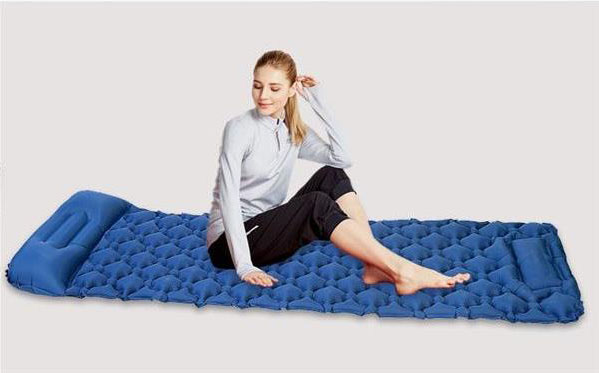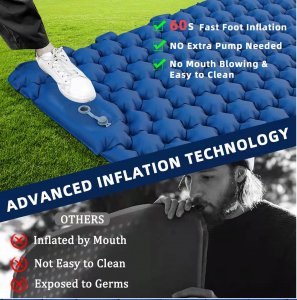News Center+ 查看更多
News Center
+ 查看更多
Optimal Insulation: Technology Trends in Camping Sleeping Pads+ 查看更多
Optimal Insulation: Technology Trends in Camping Sleeping Pads
+ 查看更多
Date:2023-12-20
Camping sleeping pads have witnessed significant technological advancements in recent years, especially in insulation methods, materials, and designs. These advancements aim to provide campers with better insulation, comfort, and durability during outdoor adventures.

1. Advanced Insulation Materials
Modern camping sleeping pads utilize innovative insulation materials to enhance warmth and comfort. Closed-cell foam pads offer basic insulation and durability, while self-inflating pads feature open-cell foam that inflates when the valve is opened, providing comfort and better insulation from the ground. Air pads use advanced materials like PrimaLoft or down insulation for superior warmth and minimal weight.
2. R-Values and Thermal Efficiency
R-Values indicate a sleeping pad's ability to resist heat flow and provide insulation. Higher R-values signify better insulation properties. Manufacturers now focus on enhancing R-Values without compromising on weight, aiming to offer lightweight pads with increased thermal efficiency suitable for varying climates and seasons.
3. Hybrid Designs and Layering Systems
Hybrid sleeping pad designs combine different materials or technologies to optimize insulation and comfort. Some pads feature multiple layers or removable components, allowing users to customize insulation levels according to weather conditions or personal preferences. This adaptability makes them suitable for diverse camping scenarios.
4. Reflective Technologies
Innovative reflective materials, like aluminized films or foils, are integrated into some sleeping pads. These materials reflect body heat back to the sleeper, enhancing warmth and minimizing heat loss to the ground, particularly in colder environments.
5. Insulated Air Chambers and Baffles
Sleeping pads with insulated air chambers or strategically placed baffles minimize convective heat loss by trapping warm air within the pad. This design prevents cold spots and enhances overall insulation performance, ensuring a comfortable sleep experience.
6. Ultralight and Compact Designs
Advancements in materials and manufacturing techniques have led to ultralight and compact sleeping pads without compromising insulation or durability. These pads are highly sought after by backpackers and minimalist campers who prioritize weight and packability.
7. Sustainable and Eco-Friendly Materials
The industry has seen a growing emphasis on sustainable materials and eco-friendly production methods. Some sleeping pad manufacturers prioritize recycled materials or responsibly sourced insulation, addressing environmental concerns in outdoor gear production.
8. User Reviews and Recommendations
Real-world experiences shared through user reviews offer insights into the actual performance of sleeping pads. Evaluating experiences regarding warmth, comfort, durability, and overall satisfaction assists in making informed purchasing decisions.
Conclusion
Technology trends in camping sleeping pads revolve around enhancing insulation, thermal efficiency, and comfort. With advancements in materials, designs, and insulation methods, these sleeping pads offer campers improved warmth, comfort, and durability, ensuring a restful night's sleep even in challenging outdoor conditions.

